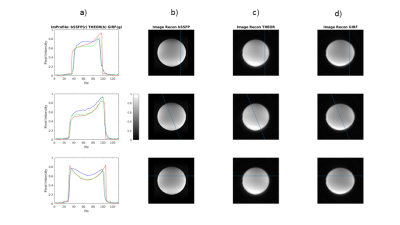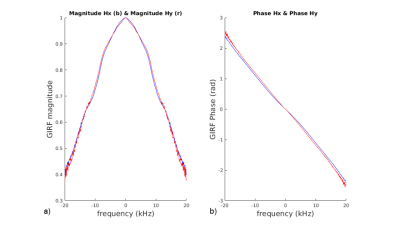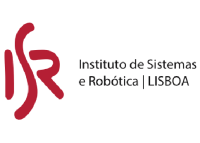Tiago Timoteo Fernandes1, Andreia S Gaspar1, Andreia C. Freitas1, Nuno A. da Silva2, and Rita G Nunes1
1Institute for Systems and Robotics - Lisboa and Department of Bioengineering, IST-UL, Lisbon, Portugal, 2Hospital da Luz Learning Health, Lisbon, Portugal
1Institute for Systems and Robotics - Lisboa and Department of Bioengineering, IST-UL, Lisbon, Portugal, 2Hospital da Luz Learning Health, Lisbon, Portugal
An open-source tool was presented for gradient impulse response function (GIRF) calibration using Pypulseq to implement the acquisition pulse sequence. Its impact was demonstrated in spiral readouts with improvements obtained in real phantom data.

Fig. 4 - a) Image profiles (slice thickness = 3mm with, FOV = 200mm, Nx = Ny = 133), normalized reports to the slice plotted in the respective reconstructed images. bSSFP (red), Image reconstructed with Nominal Spiral (blue), Image reconstructed with GIRF corrected Spiral (green). b) Image from bSSFP. c) Image reconstructed with Nominal Spiral. d) Image reconstructed with GIRF corrected Spiral. b), c) and d) show different slices in which image profile was performed.

